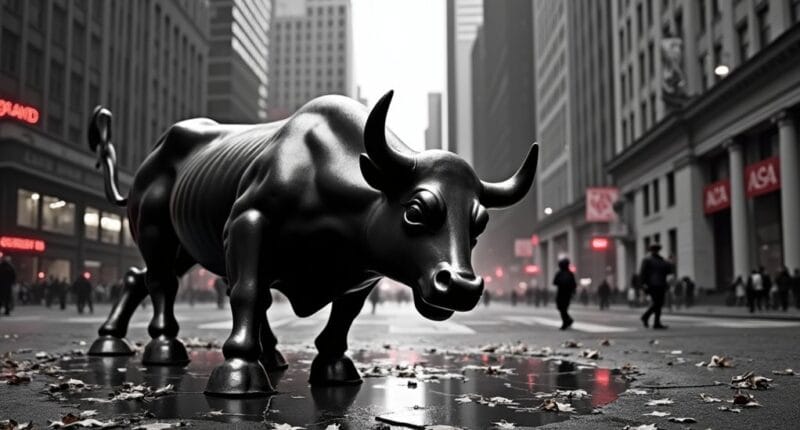Wall Street seems determined to repeat history’s worst financial disaster. Today’s market shows eerily similar red flags to 1929: rampant speculation in crypto and meme stocks, dangerous levels of borrowed money, and a widening wealth gap that threatens stability. Recent events, including the April 2025 crash, echo the Roaring Twenties’ blind optimism. Throw in deregulation pushes and trade war tensions, and this financial time machine gets scarier by the minute.

Nearly a century after the devastating 1929 market crash, Wall Street seems determined to forget its own history. The parallels between then and now are striking – and frankly, a bit terrifying. Just like in the Roaring Twenties, today’s markets are riding high on speculative fever, with crypto bros and meme stock warriors replacing the bullet-headed speculators of yesteryear.
Wall Street’s amnesia about 1929 is dangerous, as today’s crypto-fueled speculation mirrors the Roaring Twenties’ reckless exuberance.
The same dangerous cocktail of ingredients is present: rampant overconfidence, loose credit, and a widening wealth gap that would make a Gilded Age robber baron blush. In 1929, investors could borrow up to 90% of a stock’s value. Today’s traders aren’t much better, diving into risky investments with borrowed money and dreams of getting rich quick. The recent April 2025 market crash saw the S&P 500 fall 6%, echoing the dramatic declines of the past. The crash of 1929 saw investors lose 25 billion dollars in a single catastrophic day.
The wealthy elite are partying like it’s 1929 all over again, while average workers struggle to make ends meet. This economic inequality isn’t just a social justice issue – it’s a ticking time bomb for market stability. When the music stopped in ’29, the working class couldn’t prop up consumption, and the whole house of cards came tumbling down. A diversified portfolio could have helped protect investors from the devastating losses that occurred during the market collapse.
Trade wars aren’t helping either. The ghost of Smoot-Hawley haunts modern protectionist policies, threatening to choke global trade just like in the 1930s. Meanwhile, Wall Street keeps pushing for deregulation through initiatives like Project 2025, apparently forgetting why those pesky rules were created in the first place.
The tech bubble zealots of today mirror the blind optimism of 1920s investors, pumping up valuations beyond any reasonable measure. Central banks keep the party going with easy money policies, while retail investors – armed with trading apps but little financial literacy – pile into increasingly risky bets.
History doesn’t exactly repeat, but it sure does rhyme. The same warning signs that preceded the 1929 crash are flashing red: speculative excess, wealth concentration, loose credit, and regulatory rollbacks. Wall Street’s collective amnesia about these parallels would be amusing if it weren’t so dangerous.





